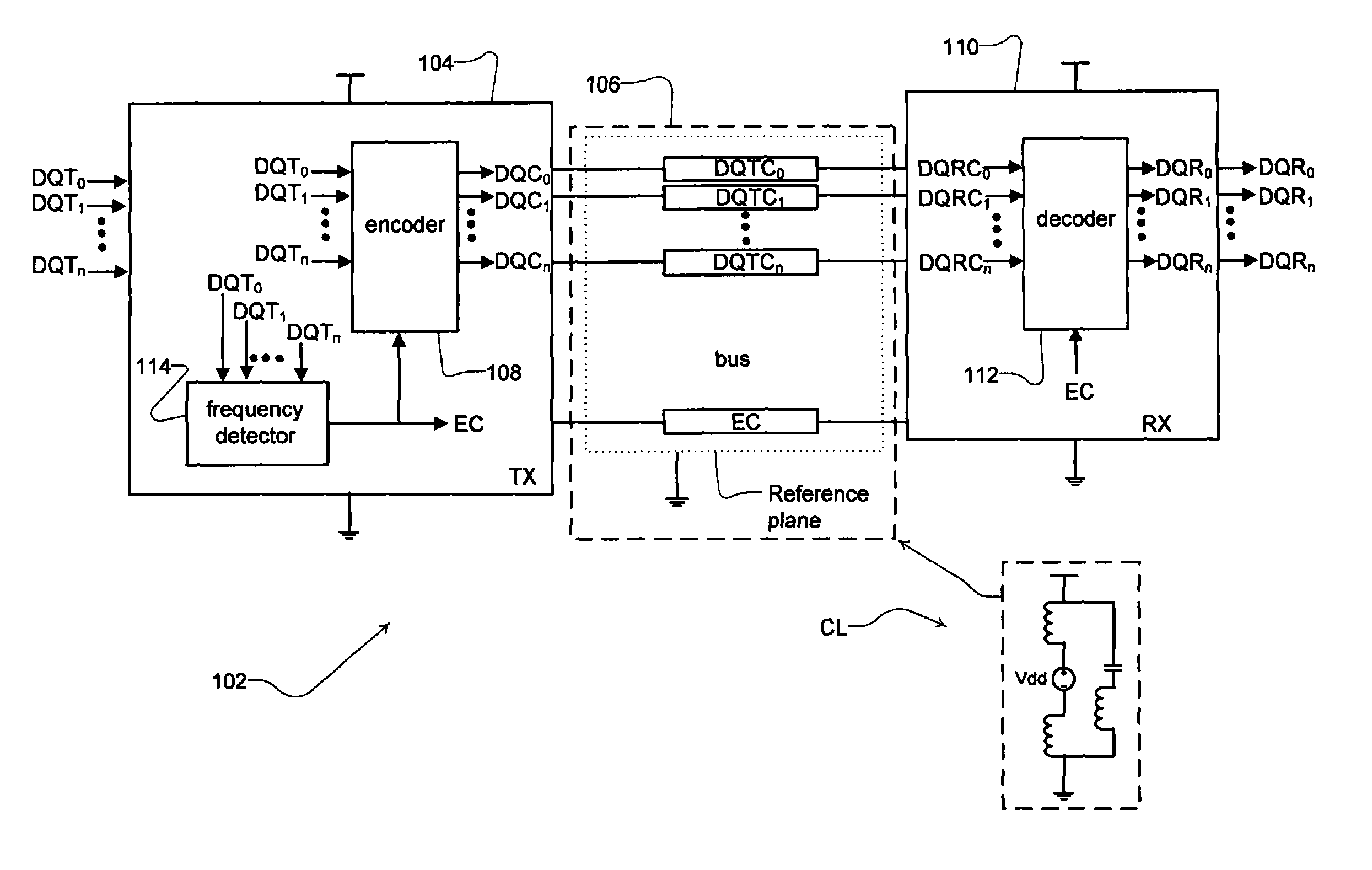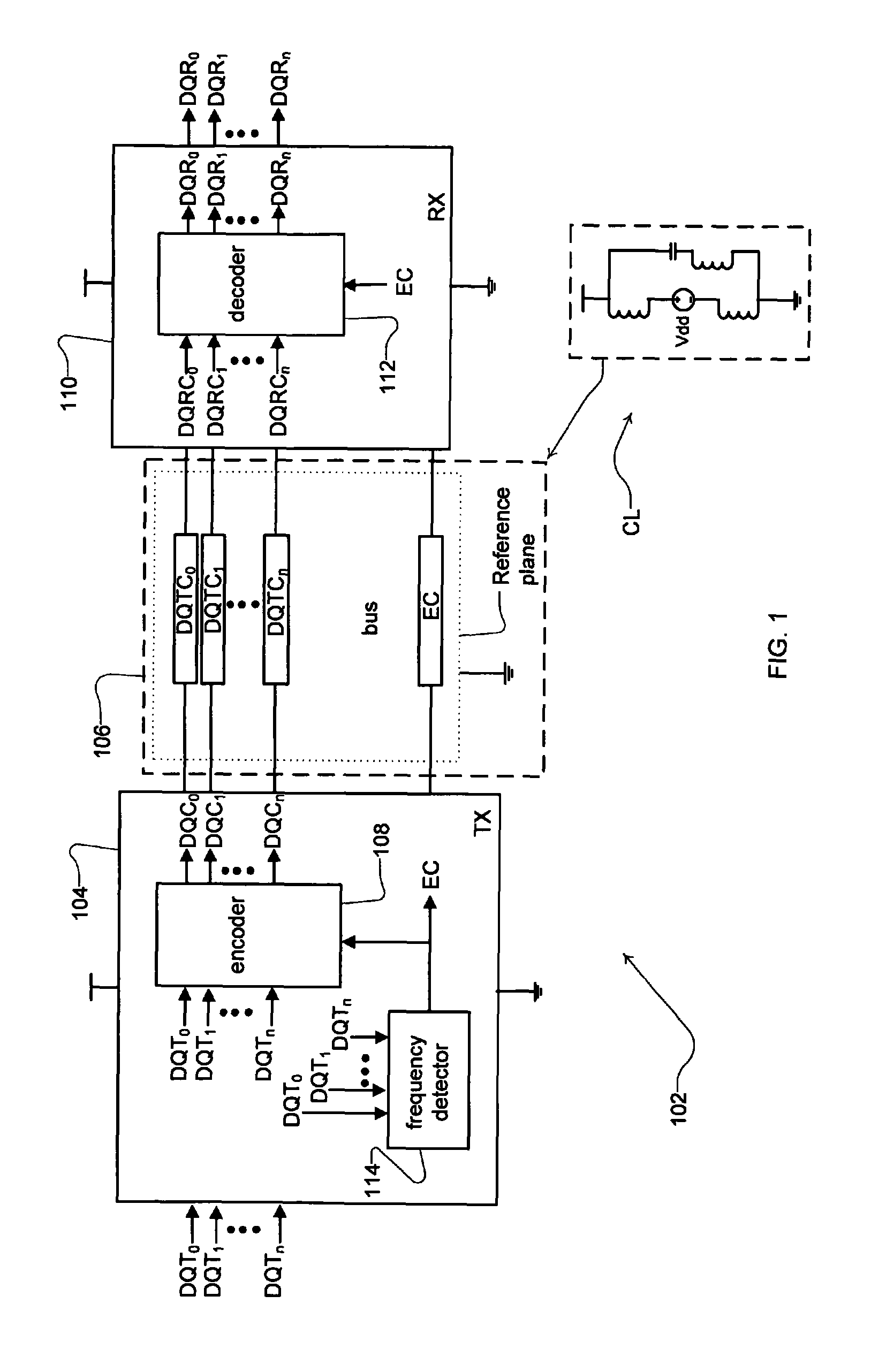Frequency responsive bus coding
a bus and frequency response technology, applied in the field of frequency responsive bus coding, can solve the problems of increasing the frequency response of the impedance of the power delivery network, increasing the demands on the devices involved in the transfer of data, and increasing the complexity of each componen
- Summary
- Abstract
- Description
- Claims
- Application Information
AI Technical Summary
Benefits of technology
Problems solved by technology
Method used
Image
Examples
Embodiment Construction
[0022]A data system 102, such as the frequency-based bus coding system according to one embodiment of the present technology, is illustrated in FIG. 1. The components of the system control data transmissions on the bus by monitoring frequency content of the bus to detect one or more frequencies, such as a frequency that can lead to or be suggestive of the potential for system performance degradation. The detected frequencies can be signals that are actively transmitted by one or more components and, if desired, may include signals passively transmitted (e.g., accounting for bus idle time, return or other communications transmitted on the bus). Upon detection of a particular frequency, frequencies or range(s) of frequencies, the data system components alter the control of the encoding scheme used for transmitting data onto the bus to achieve specific frequency-related goals. For example, in one implementation, the frequency-based bus coding system may detect a resonant frequency cond...
PUM
 Login to View More
Login to View More Abstract
Description
Claims
Application Information
 Login to View More
Login to View More - R&D
- Intellectual Property
- Life Sciences
- Materials
- Tech Scout
- Unparalleled Data Quality
- Higher Quality Content
- 60% Fewer Hallucinations
Browse by: Latest US Patents, China's latest patents, Technical Efficacy Thesaurus, Application Domain, Technology Topic, Popular Technical Reports.
© 2025 PatSnap. All rights reserved.Legal|Privacy policy|Modern Slavery Act Transparency Statement|Sitemap|About US| Contact US: help@patsnap.com



